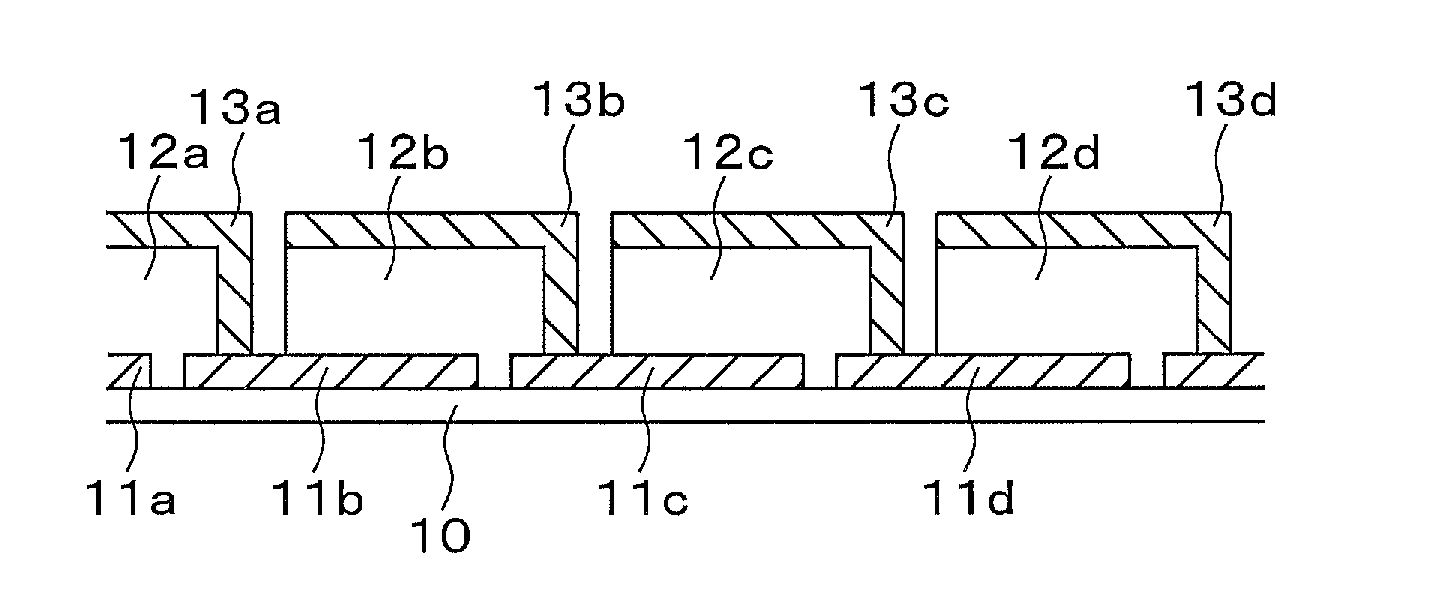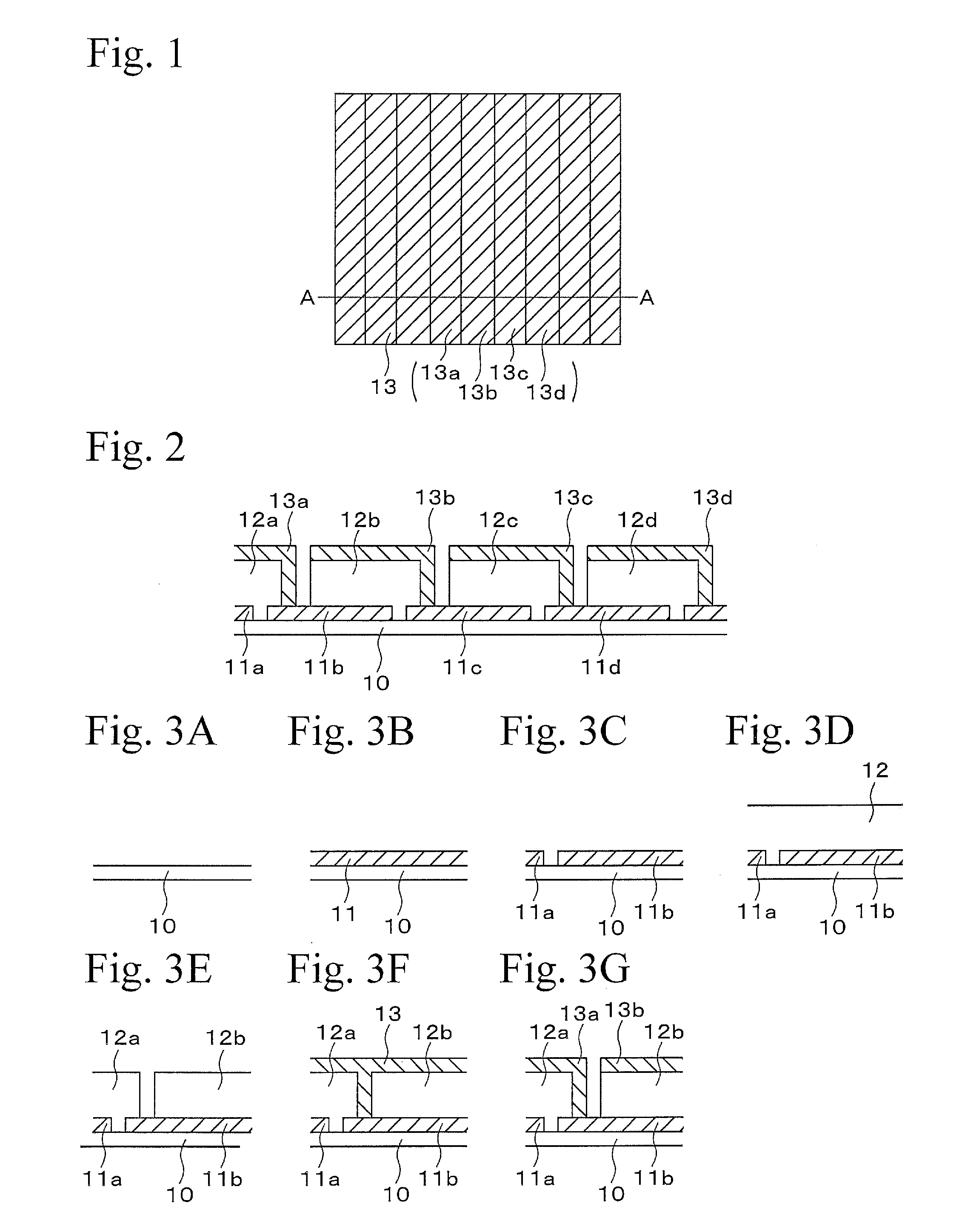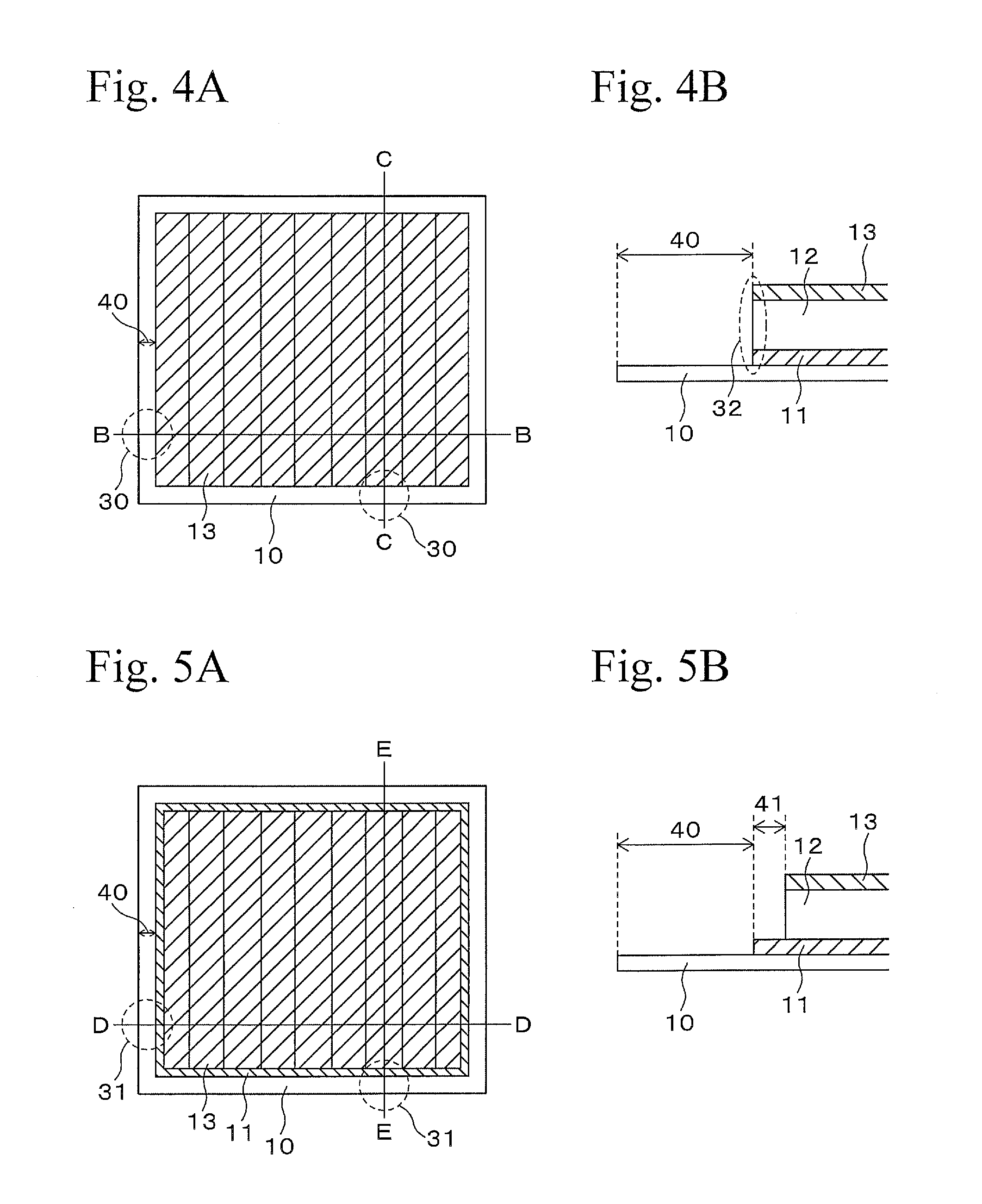Thin film solar cell and method for manufacturing same
a technology of thin film solar cells and manufacturing methods, which is applied in the direction of photovoltaics, electrical devices, semiconductor devices, etc., can solve the problems of reducing production efficiency and requiring processing time, and achieve the effect of improving production efficiency and easy working process
- Summary
- Abstract
- Description
- Claims
- Application Information
AI Technical Summary
Benefits of technology
Problems solved by technology
Method used
Image
Examples
example 1
[0048]By the method for production mentioned above, a back surface electrode layer having a thickness of 0.4 μm, a light absorbing layer having a thickness of 1.4 μm, and a transparent electrode layer having a thickness of 0.6 μm were formed on a glass substrate, in this order, so as to produce a thin-film solar cell. An area 42 to be removed, which is a circumferential part of the solar cell shown in FIG. 6 was set at 6.4 mm, and this area was removed by a laser having a power output 15 W. Perpendicular grooves are formed at both sides of the solar cell at the heat relaxation distance from the end, so as to obtain the thin-film solar cell of Example 1. It should be noted that the heat relaxation distance 43 was set 100 μm and width 44 of the perpendicular groove 20 was set 40 μm, so as to remain 60 μm to the outside of the perpendicular groove.
PUM
 Login to View More
Login to View More Abstract
Description
Claims
Application Information
 Login to View More
Login to View More - R&D
- Intellectual Property
- Life Sciences
- Materials
- Tech Scout
- Unparalleled Data Quality
- Higher Quality Content
- 60% Fewer Hallucinations
Browse by: Latest US Patents, China's latest patents, Technical Efficacy Thesaurus, Application Domain, Technology Topic, Popular Technical Reports.
© 2025 PatSnap. All rights reserved.Legal|Privacy policy|Modern Slavery Act Transparency Statement|Sitemap|About US| Contact US: help@patsnap.com



